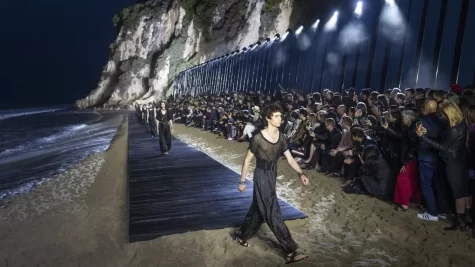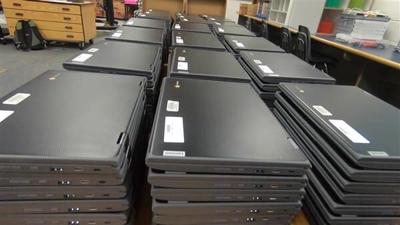The Environmental Impact of Fashion week
October 26, 2022
Fashion week has been a staple in the fashion industry around the world since Paris held the first fashion week in 1943 which, at the time, was called “press week”. The term “fashion week” didn’t become popularized until London held their first “fashion week” in 1983. In the beginning, fashion weeks were very exclusive and meant to be held only for the top clientele of the designers presenting. As time went on, fashion weeks became more popular and publicized to become the fashion week we know today. Milan, Paris, London, and New York City were the first four big cities to host and popularize fashion week. Originally, fashion week began to give designers an opportunity to showcase their clothing to sell, but today fashion week has turned into an opportunity for designers to show off their most elaborate pieces that are often not even up for sale.

As time has gone on, more people have been pointing out the environmental impact that the fashion industry has. Fashion weeks are no exception. Upwards of 100 shows are put on during fashion week that all require elaborate lighting and sets that are put up and torn back down a multitude of times throughout the week. Today more than ever, designers feel the need to create larger-than-life events for the world to see. For example, in July 2020 during Saint Laurent’s fashion show, the brand set up on a beach in Malibu which violated multiple environmental regulations to protect Malibu’s natural resources.
While designers and brands are working towards becoming more sustainable in the materials they use, they are only wearing these “sustainable” outfits for fashion week once or twice before they are never worn again. Tamara Clark, the CEO of fashion roundtable feels that fashion shows should be portraying the future. “Fashion shows are supposed to point to the future, and if they’re ignoring the fact that we live in incredibly dangerous times…What are they saying about the future?” said Clark.
The clothing showcased during fashion week has lots of influence on society’s fashion. However, the majority of the population can’t afford to consistently buy clothes from the brands that are showcased during fashion week, so they turn to fast fashion. Fast fashion is mass-produced clothing that is unsustainable and unethically made in order for it to be sold at a low price. Because fashion trends today move so fast, a majority of these fast fashion pieces will end up in the trash or forgotten in the back of a closet. Even if brands are working towards being more sustainable, their followers are not.
Fashion weeks are not only unsustainable in the wasteful sense, but they also increase the number of visitors in these areas. Big cities are already emitting tons of carbon into the atmosphere, but with a big increase in visitors during fashion week, even more waste is being created and more energy is being used.
Some cities are simply cancelling their fashion week with a concern for the environment. Stockholm canceled their fashion week in 2019. Jennie Rosén, the CEO of the Swedish fashion council, believes that in order to have a successful fashion week, they need to put sustainability on the forefront of the presentations,”We need to put the past to rest and stimulate the development of a platform that is relevant for today’s fashion industry, and support brands in their development of next-generation fashion experiences. By doing this we can adapt to new demands, reach sustainability goals, and be able to set new standards for fashion,” Said Rosén.
Canceling fashion week is not an option for many cities. Because fashion week brings in so much revenue for the cities and exposure for the brands, it would be difficult for cities to cancel their fashion week. Orosla de Castro believes that changes to fashion week should be made, but getting rid of them entirely may not be the solution, “Changing the nature of fashion week is the answer, not dismantling it altogether,” Said Castro in an article on the voice of fashion. However, it is possible to have a less extravagant fashion week to become more sustainable. For example, many shows are moving towards using multi-use sets, instead of putting up and tearing down a new set for each show.
Moderate changes are the key to success, and continuing to have fashion week gives a chance for up-and-coming designers to showcase their new ideas for sustainability. Moving forward, sustainability should be the focal point for the fashion industry, but will the new sustainability efforts of these brands be good enough? Only time will tell.










